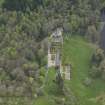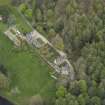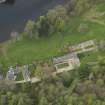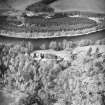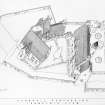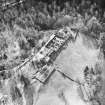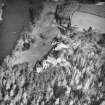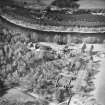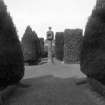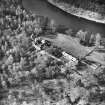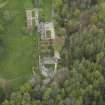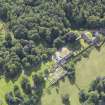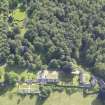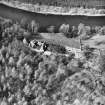Pricing Change
New pricing for orders of material from this site will come into place shortly. Charges for supply of digital images, digitisation on demand, prints and licensing will be altered.
Upcoming Maintenance
Please be advised that this website will undergo scheduled maintenance on the following dates:
Thursday, 9 January: 11:00 AM - 3:00 PM
Thursday, 23 January: 11:00 AM - 3:00 PM
Thursday, 30 January: 11:00 AM - 3:00 PM
During these times, some functionality such as image purchasing may be temporarily unavailable. We apologise for any inconvenience this may cause.
Stobhall Castle, Dowery House
Chapel (16th Century), Garden (Period Unassigned), Tower House (17th Century)
Site Name Stobhall Castle, Dowery House
Classification Chapel (16th Century), Garden (Period Unassigned), Tower House (17th Century)
Alternative Name(s) Drummond Castle; Dower House; Stobhall Policies
Canmore ID 28689
Site Number NO13SW 6
NGR NO 13208 34372
Datum OSGB36 - NGR
Permalink http://canmore.org.uk/site/28689
First 100 images shown. See the Collections panel (below) for a link to all digital images.
- Council Perth And Kinross
- Parish Cargill
- Former Region Tayside
- Former District Perth And Kinross
- Former County Perthshire
NO13SW 6.00 13208 34371
(NO 1320 3435) Stobhall (NR); Chapel (NR)
OS 6" map (1959)
NO13SW 6.01 NO 13197 34351 Chapel; Tower House
NO13SW 6.02 NO 13192 34364 Laundry; Brewhouse; Bakehouse
NO13SW 6.03 Centred NO 13211 34351 Wall (Boundary Walls and Sundials)
NO13SW 6.04 NO 13212 34399 Sundial (Sundial in Formal Garden)
NO13SW 6.05 NO 13224 34431 House (Caretakers house and garage)
NO13SW 6.06 NO 13247 34511 Summer House
NO13SW 6.07 NO 13376 34437 Sundial (Sundial in Octagonal Garden)
NO13SW 6.08 NO 13267 34445 Bridge (Old Bridge)
NO13SW 6.09 NO 13459 34452 Lodge
NO13SW 6.10 NO 13187 34339 Library (new)
NO13SW 6.11 NO 13252 34477 Sundial (Sundial made for Drummond Castle)
See also:
NO13SW 128 NO 13187 34339 New Library
NMRS REFERENCE
Restoration carried out under the supervision of the Ministry of Works c 1950-60
Owner: Earl of Perth
MISCELLANEOUS - NMRS
Dr Thomas Ross - manuscript notes
(Undated) information in NMRS.
The castle of Stobhall comprises four buildings (the dower-house of Drummond Castle - built early in the 17th century, a chapel block, containing chapel and dwelling house, built in the late 16th century, and a laundry block and another domestic range, both later buildings) all within an irregular courtyard wall.
The site was settled as early as the 14th century and was the principal seat of the Drummond family until the erection of Drummond Castle (NN81NW 2) in the 15th century. It is well preserved and still occupied.
D MacGibbon and T Ross 1887; N Tranter 1963
Stobhall is generally as described and planned. The chapel is still in use as such.
Visited by OS (EGC) 27 February 1969
Possible 17th century garden.
N Hynd 1984.
Situated on the promontory at Stobhall there are a group of medieval and later buildings. The earliest of these (possibly of 14th- or 15th-century date) is a chapel which was converted to secular use in about 1578, when it was incorporated into a tower-house three storeys and an attic in height. The chapel (13.47m by 6.83m overall) has chamfered eaves-courses and offsets to the gable walls; at the SE angle there is a zoomorphic skewput. A deeply-splayed trefoil-headed window in the N wall is probably original and, although the fenestration on the S side was remodelled in the 19th century, it may in part reflect an earlier scheme. An arch-pointed doorway met at the entry to the basement at the W end of the chapel was probably inserted at the time the residential block was added.
Within a first-floor apartment above, there is an elaborately-carved fireplace bearing the Drummond arms. Restored in 1840, the chapel retains a fine, although heavily repainted, ceiling (dated 1642; repainted 1858), its original aumbry door, stoup and altar slab; the recent removal of plaster from the vestibule and adjoining rooms has revealed further painted detail. An octagonal font, ornamented with a plain band of interlace and what may be a defaced sheela-na-gig, was removed from Perth to Stobhall by the present Earl.
In the late 16th or early 17th century, a single-storey laundry range (with brewhouse and bakehouse in a basement beneath) was added to the N of the tower, and a two-storey dower-house was built across the neck of the promontory to the NE, in effect providing ranges on three sides of an open court. The dower-house bears the date 1671 but may not have been completed until 1695. In 1781 a two-storey domestic range (demolished 1953, rebuilt 1965) was erected on the SSW side of the promontory to the S of the chapel, and it is said that this incorporated some earlier fabric. Buttressed walls, possibly incorporating earlier ones, and a formal garden were added by the mid 19th century, together with a pend to the E of the dower-house; formal policies, however, are depicted at Stobhall by Adair about 1685 and within the present garden there is a sundial which bears the date 1643. Although remodelled more than once, both the tower-house and the dower-house retain many of their original fittings; the dower-house itself has a fine high relief ceiling above the stair.
Stobhall was the residence of the Drummonds probably from at least 1345 and may have succeeded the earlier Montfiquet caput at Cargill (NO13NE 22). It remained their principal seat until 1487/8.
Visited by RCAHMS (IMS) August 1989.
N Patullo 1974; Land Use Consultants 1987; NMRS MS/232/7a/Pe/5; OS Name Book; D MacGibbon and T Ross 1887; J B Paul 1910.
Photographic Survey (August 1954)
Photographs by the Scottish National Buildings Record/Ministry of Work in August 1954.
Watching Brief (18 June 2018 - 17 September 2018)
NO 13208 34371 (NO13SW 6) A watching brief was carried
out, 18 June – 17 September 2018, on work associated with
the construction of a new passageway between the laundry
and lower floor of the tower house, and the demolition of a
larder on the N side of the laundry. Limited evidence was
recovered for the nature of the foundations of the tower
house. However, an ornate arched doorway was exposed,
against which the tower house had been built. This doorway
leads into the lower floor of the chapel and indicates that the
tower house was built against the N side of the pre-existing
chapel. The demolition of the larder did not record anything
of archaeological interest.
Archive: NRHE
Funder: Private individual
Derek Hall
(Source: DES, Volume 19)
Oasis (derekhal1-319067) 2 November 2018













































































































